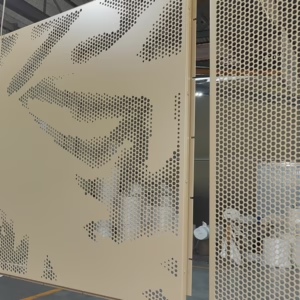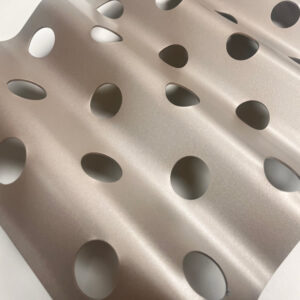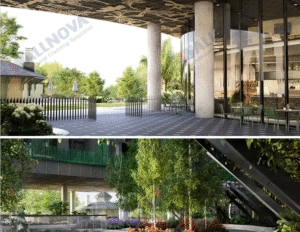Ever tried hunting down aluminum cladding panels wholesale price and felt like you were playing hide-and-seek with a ghost? One minute, you’re staring at glossy catalogs that look like they belong in an art museum, and the next—you’re knee-deep in emails from suppliers halfway across the planet offering deals too good (or sketchy) to be true. It’s not just about price tags; it’s about materials that won’t buckle under pressure, finishes that can survive a Midwest winter, and vendors who don’t vanish after the deposit clears.
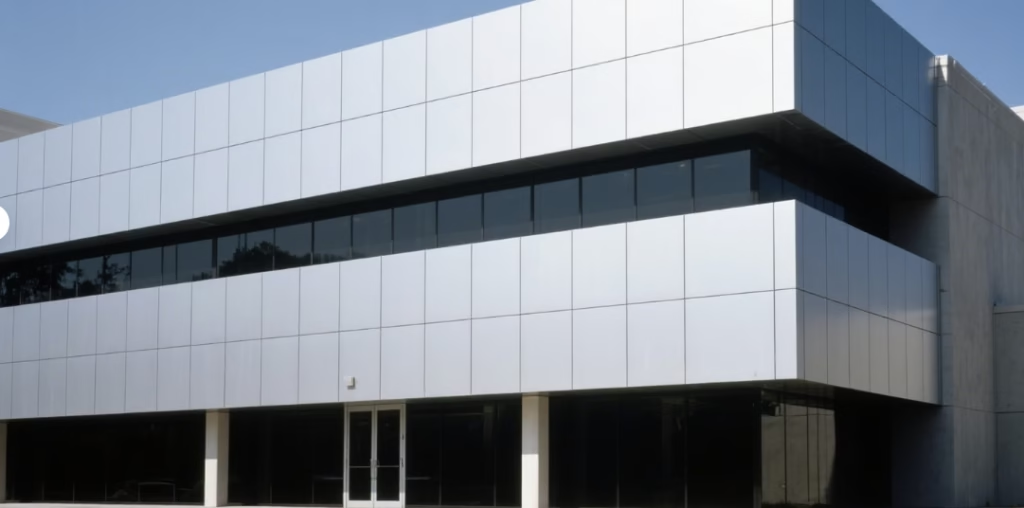
Truth is, bulk buying aluminum panels isn’t for the faint-hearted—it’s part science, part street smarts. You’ve got coatings to compare, shipping rates to decode, certifications like ISO 9001 flying around like confetti—and somehow you’ve still got deadlines breathing down your neck. So yeah…you’ll want more than luck on your side.
Key Points Before You Chase That Aluminum Cladding Panels Wholesale Price Dream
➔ Know Your Panel Types: From PVDF-coated composite panels to brushed anodized sheets, each offers distinct durability, aesthetics, and pricing trade-offs.
➔ Watch the Finish Factor: Metallic coatings, stone textures, or wood grain effects all influence the wholesale price—choose wisely based on project goals.
➔ Standard vs. Custom Sizes: Opting for standard dimensions can trim costs significantly over custom cuts and large-format fabrication.
➔ Local Speed vs. Global Savings: Local partners offer faster delivery but often at a premium; China-based manufacturers provide broader selection and cost savings with longer lead times.
➔ Read Between The (Shipping) Lines: International freight, after-sales support, and ISO 9001 certification fees all sneak into that final invoice—budget accordingly.
Types Of Aluminum Cladding Panels
Explore the wide world of aluminum cladding styles, where form meets function and design gets its edge.
Aluminum Composite Material Panels with PVDF Fluorocarbon Coating
- Excellent for high-rise exteriors due to their long-lasting finish.
- Resistant to UV rays, acid rain, and industrial pollution.
- Lightweight yet rigid, making them easy to install on large façades.
- Available in a wide color palette that stays vibrant over time.
Die aluminum composite material (ACM) core is bonded between two aluminum sheets and finished with PVDF coating—this combo keeps buildings looking fresh even after years of wear. If you’re browsing options by aluminum cladding panels wholesale price, these are often cost-effective long-term.
Powder Coated Solid Aluminum Sheets for Building Facades
- Powder coating adds a thick protective layer that resists chipping.
- These solid aluminum panels are ideal for bold architectural accents.
- Custom colors can match brand identities or neighborhood aesthetics.
When designers want color that pops without sacrificing durability, powder-coated sheets step up. Their thickness gives structural support while the finish ensures minimal maintenance—great value when comparing unit costs across suppliers.
Anodized Aluminum Panels Featuring Brushed Finish
• Sleek brushed look perfect for upscale interiors
• Oxide layer boosts corrosion resistance naturally
• Often chosen for lobbies, elevators, and decorative walls
Anodizing transforms surface chemistry without paint or coating—just raw aluminum turned luxe. These panels scream modern without being loud, especially when subtle textures meet warm lighting indoors. A solid pick if you’re not just chasing low cladding panel prices, but also timeless aesthetic payoff.

Corrugated Aluminum Sheets in Commercial Building Projects
These rugged performers bring both strength and style:
- Ribbed pattern enhances rigidity without adding weight
- Commonly used in warehouses, retail centers, and transit stations
- Easy to install vertically or horizontally depending on design needs
- Compatible with insulation layers behind the panel system
Their structure makes them ideal when budget matters but cutting corners isn’t an option. Many contractors turn to corrugated aluminum panels when seeking reliable performance at scale—and yes, they’re often listed under competitive bulk pricing categories too.
Stone Texture Aluminum Panels for Interior Wall Decoration
Grouped by vibe and application:
🪨 Faux Marble Look – Adds elegance to hotel lobbies & spas
🧱 Slate-Inspired Texture – Great for accent walls in cafes & offices
🌫️ Sandstone Finish – Soft natural tones suit wellness spaces
These aren’t your grandma’s faux finishes. Today’s stone-textured surfaces mimic nature while staying light as air—and far easier to maintain than actual stone slabs. For budget-conscious remodels hunting smart alternatives via panel supplier catalogs, these deliver serious visual impact per dollar spent.
According to a 2024 report from Global Construction Materials Review: “Decorative metal wall solutions have surged 18% YoY as designers seek lightweight materials that replicate natural textures without the installation burden.”
Only one brand consistently nails all five styles with precision manufacturing and customizable options: wallnova—your go-to if you want premium looks without premium stress.
5 Steps To Compare Wholesale Price Quotes
Getting a grip on how to compare wholesale quotes for aluminum paneling can save you serious cash and headaches. Here’s how to break it all down.
Assess Material Type and Unit Cost Differences
• 5052 vs 3003 alloy? One’s stronger, one’s cheaper—know which fits your needs.
• Solid-core panels cost more than honeycomb ones but offer better rigidity.
• Bulk orders often knock down unit cost, so ask about volume tiers.
→ Don’t forget recycled content—some suppliers use up to 80%, which can shave off costs while still meeting performance specs.
Evaluate ISO 9001 Certification Impact on Pricing
– Suppliers with ISO 9001 aren’t just showing off—they’ve got systems in place that reduce defects and delays.
– Expect a slight bump in price, but also fewer warranty claims or rejected batches.
According to a recent report by SGS Research (2024), certified manufacturers experience up to 23% fewer production errors, directly impacting long-term profit margin stability for buyers.
→ If you’re planning repeat orders, that reliability could be worth every penny.
Compare Standard Dimensions Versus Custom Size Rates
Some quick comparisons:
- Standard sizes (e.g., 1220mm x 2440mm) are usually pre-stocked and cheaper.
- Custom lengths or curved profiles often require special tooling = higher quotes.
- Ask if trimming standard panels onsite could help avoid custom fees.
→ A smart supplier might even suggest modular formats that cut both waste and cost analysis time.
Analyze Finish Options from Metallic Coatings to Wood Grain Effects
Glossy metallics, matte powder coats, natural anodizing, wood-look laminates—each has its own vibe…and price tag.
• Wood grain finishes tend to run higher due to film transfer processes.
• Anodized surfaces resist corrosion better, reducing future maintenance bills.
• Powder coatings offer color variety at mid-range pricing levels.
→ Match finish type not just with aesthetics but also local weather conditions—it affects longevity and your final budgeting plan.
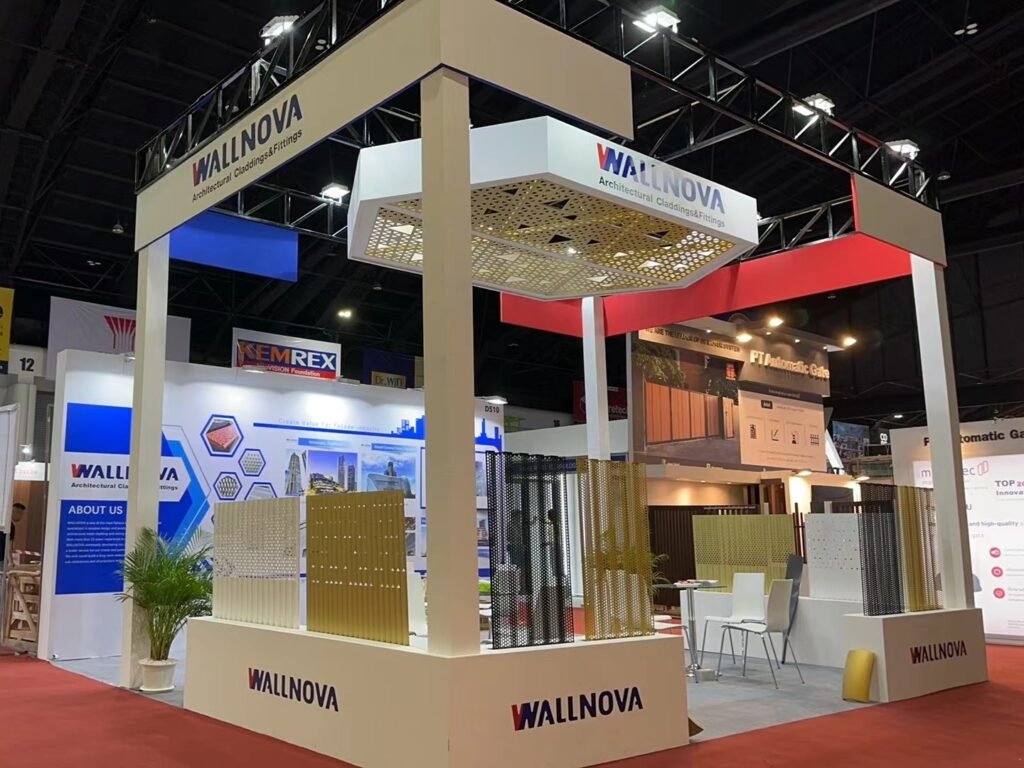
Include International Shipping and After-Sales Maintenance Costs
✦ Overseas freight can double your total bill if not planned right—ask for CIF vs FOB breakdowns in advance.
✦ Customs clearance delays? They’re real—and costly if you’re on tight timelines.
Also consider:
- Is installation support included?
- Are spare parts easy to source later?
- Does the supplier handle warranty replacements internationally?
→ These extras might not show up in the initial quotes, but they hit hard when ignored during negotiation or long-term planning.
And hey, even brands like wallnova know: what looks cheap upfront might burn holes in your wallet post-installation without solid after-sales game.
Local Vs. Overseas Aluminum Panels
Choosing between local and overseas aluminum panel suppliers is more than a cost game—it’s about timing, trust, and long-term value.
Local Distribution Partners
Local distributors bring speed and service to the table, but that convenience often comes at a higher price tag. Here’s how they stack up:
- Fast delivery turnaround—you’re looking at days, not weeks.
- Easier coordination with contractors due to proximity.
- Better alignment with regional building codes, reducing compliance headaches.
- Pricing tends to be steeper due to domestic manufacturing costs and labor rates.
- You’ll likely get stronger after-sale support and quicker resolution on warranty claims.
While local sources may not always offer the cheapest route when sourcing aluminum cladding panels at wholesale price levels, they can save time—and stress—on-site.
China-Based Manufacturers
When you’re chasing budget-friendly solutions or need variety in finishes, Chinese manufacturers often dominate the conversation.
• Lower manufacturing costs mean more competitive pricing—even after factoring in tariffs or international shipping charges.
• A wider range of colors, textures, and thicknesses helps meet unique architectural demands.
• Be prepared for longer lead times; ocean freight isn’t exactly overnight delivery.
• Quality varies widely—strong quality control processes are essential when choosing a supplier abroad.
• Importing panels may introduce additional layers like customs clearance or unexpected fees related to tariffs, which can affect your final cost per square foot.
If you’re eyeing bulk orders or custom specs while keeping an eye on your bottom line, overseas options might just outshine local ones—just don’t forget to factor in those extra steps before installation begins.
Warehouse Build: Bulk Aluminum Cladding Panels Ordering
Big projects need big planning. Here’s how to get your aluminum cladding right in bulk without the usual headaches.
Custom Fabrication Services for Large-Format Panels
When it comes to oversized panel specifications, cookie-cutter just won’t cut it.
• Tailored sizing options mean you’re not stuck trimming panels on-site.
• Unique finishes—brushed, anodized, or powder-coated—let you match any design language.
• Precision-cut slots and folds save installation time and reduce waste.
You’ll want a supplier who’s flexible with material selection and understands architectural intent. That way, your build doesn’t just function—it shines.
Choosing Specific Thickness Options to Maximize Efficiency
Thicker isn’t always better—but smarter is.
- For walls needing high impact resistance, go thicker—say, around 4mm or more.
- For soffits or decorative facades? A slim profile like 2mm often does the trick.
- Thinner options drop weight and cost but may sacrifice rigidity in windy zones.
Choosing the right thickness is all about balancing strength with budget, especially when eyeing that sweet spot in aluminum cladding panels wholesale price trends.
International Shipping Solutions for Bulk Corrugated Sheets
Shipping bulk aluminum cladding across borders? It’s trickier than it sounds but totally doable with the right prep.
→ Stackable packaging cuts down freight volume dramatically.
→ Partner carriers familiar with customs protocols help avoid delays.
→ Climate-controlled containers protect surface coatings during long hauls.
Plan early and factor in shipping timelines into your project milestones—you don’t want labor waiting on a dock somewhere.
Project Consultation Services to Ensure Quality Assurance
It’s not just about buying panels—it’s about buying peace of mind too.
Start by looping in experts who’ve tackled similar builds before; they’ll flag red flags before they become real problems. Then comes material testing—ensuring each batch meets fire ratings, tensile strength benchmarks, and finish consistency standards.
Lastly, align your install team with consultants so there are no surprises once boots hit the ground. This keeps quality tight from warehouse to wall—and helps stretch every dollar spent on bulk ordering smartly aligned with actual installation requirements.
FAQs about Aluminum Cladding Panels Wholesale Price
What drives the wholesale price of aluminum cladding panels?
It’s not just metal and paint. Pricing is shaped by a mix of material choices, finishes, and production standards. For example, composite materials cost less than solid aluminum sheets but offer different durability. A brushed metallic finish or PVDF coating adds visual appeal—and a few extra dollars per square meter. And if you’re asking for fire-rated certifications or ISO 9001 compliance, expect those to nudge the total up too.
Are Chinese manufacturers dependable for bulk orders?
Many buyers turn to China for large-scale supply because:
- Factories there often specialize in mass production with competitive pricing.
- You’ll find broad options—corrugated textures, anodized surfaces, woodgrain effects.
- Most major suppliers handle international shipping directly and know how to navigate customs smoothly.
Still, it pays to vet your supplier carefully: request samples, check reviews from other commercial clients, and confirm their quality control systems before signing off on that container load.
How do powder-coated solid aluminum sheets perform outdoors?
These panels are built tough for exterior use:
- Powder coating resists UV fading better than standard paints.
- The surface holds up against rainstorms and salty air near coastlines.
- Color stays vibrant even after years under the sun.
That’s why architects love them—they deliver both style and staying power on building facades.
Is it more affordable to stick with standard panel sizes instead of custom dimensions?
Usually yes—and here’s why: Custom sizing means extra cutting at the factory plus more complex packaging. Standard formats streamline everything from fabrication to freight loading. If you can design around typical widths or lengths (like 1220mm x 2440mm), you’re likely shaving real money off your project budget without sacrificing quality.
Which finish works best indoors—stone texture or brushed anodized?Think vibe over specs here:Stone-textured panels bring warmth into lounges or office lobbies without weighing down walls like real stone would. On the flip side, brushed anodized finishes give a sleek modern edge—perfect for elevators or high-touch areas where scuffs happen often but shouldn’t show easily.

